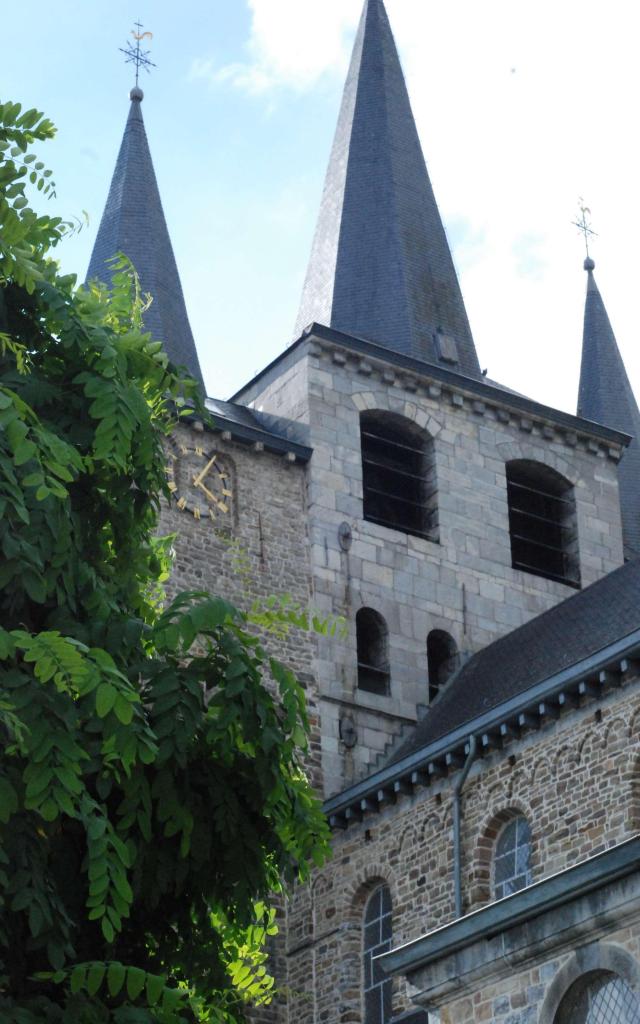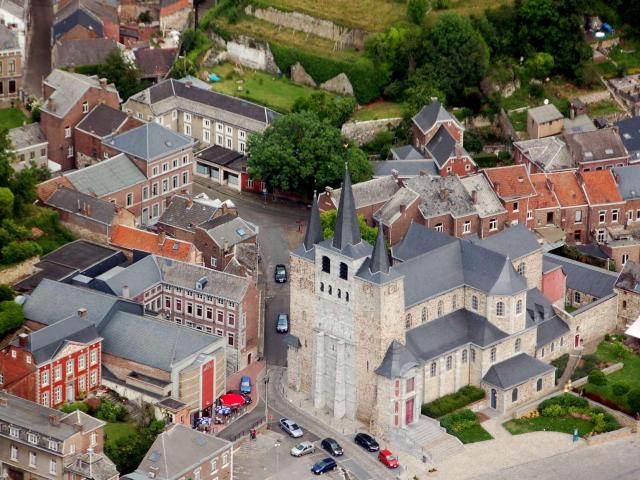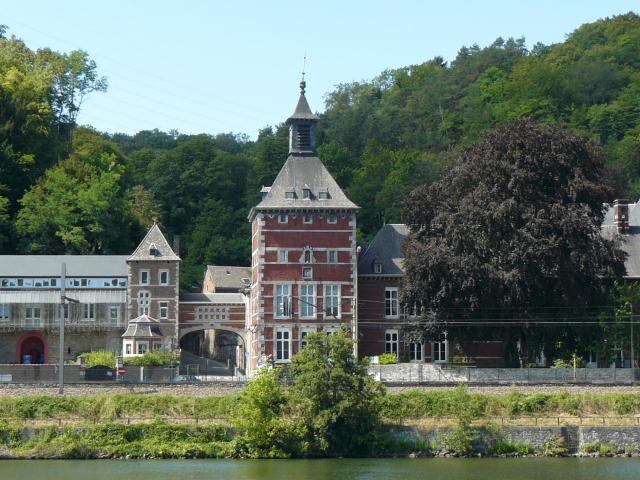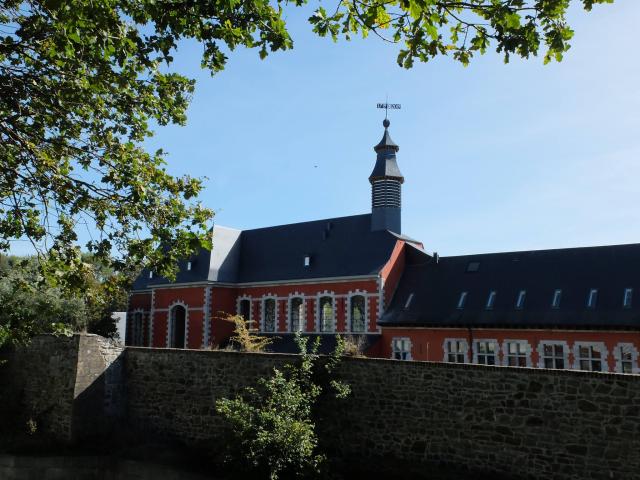The must-sees
Patrimonial, unusual, sporty, fun: if you had to do only one activity in this locality it’s in these proposals that you will find it.
 Vue Collégiale d'Amay en autmne
Vue Collégiale d'Amay en autmnePatrimonial, unusual, sporty, fun: if you had to do only one activity in this locality it’s in these proposals that you will find it.
In the center of the village stands one of the most interesting religious monuments: the collegiate church. It features a long nave extended by the imposing mass of an “avant-corps” composed of three majestic towers topped by pointed bell towers. A building from the Ottonian period, it has undergone numerous transformations over the centuries. In this religious complex, where it was discovered in 1977, you can admire the sarcophagus of sancta Chrodoara, an internationally recognized masterpiece of Merovingian art.
The Collegiate Church’s treasury also includes the shrine of St. George and St. Ode, dating from 1240-1250, which houses the relics of St. Ode and other illustrious figures. The former cloister of the collegiate church houses a museum of archaeology, one of the highlights of which is the magnificent permanent exhibition Mosa Nostra, presenting the Merovingian Meuse from Verdun to Maastricht. Around the collegiate church and this square, the houses of the canons assigned to worship and manage the collegiate church were once grouped. The canons’ houses generally date from the mid-18th century, with the exception of the Gossuart house. Many of them feature architecture reserved for the elite.
 Tour de la collégiale d'Amay
Tour de la collégiale d'Amay Vue aérienne sur la collégiale d'Amay et les maisons cannoniales
Vue aérienne sur la collégiale d'Amay et les maisons cannoniales Châsse de saint Geroges et de sainte Ode
Châsse de saint Geroges et de sainte OdeA little way from the religious center and commonly referred to as the “Romanesque tower”, Amay’s keep, the stronghold house of the local solicitors, was probably erected in the 12th century during the campaign to consolidate and build strongholds to protect the Principality of Liège under Henri de Leez (1145-1164). This fortified house has been listed as one of Wallonia’s outstanding heritage sites. During the 19th century, other trends also influenced the construction of bourgeois houses, such as Art Nouveau and Art Deco, but these remained relatively rare. Of particular note, however, are the four magnificent houses on chaussée Roosevelt, 34 to 40, in Amay. They were designed in 1914 by Maréchal. They feature earthenware tiles with flower motifs in the tympanum of the windows or on the names of the flowers – daisies, roses, lilies and wisteria – designating the villa.
 Tour Romane à Amay
Tour Romane à Amay Vue sur des maisons de style art nouveau à Amay
Vue sur des maisons de style art nouveau à Amay Château de Jehay
Château de Jehay  Abbaye de Flône
Abbaye de Flône Eglise abbatiale de la Paix-Dieu à Amay
Eglise abbatiale de la Paix-Dieu à AmayAmpsin, diminutive of Amay, was an industrial village dominated by the “de Laminne” and “Dumont” families, who created several extractive industries in the village.
Flône, a Mosan village, is best known for its abbey founded at the end of the 11th century. Occupied by the Dames de l’Instruction Chrétienne, the abbaye de Flône is today one of the most important schools in the commune of Amay.
Jehay, an agricultural village at the gateway to the Hesbaye, is famous for being the birthplace of “Zénobe Gramme”, inventor of the industrial dynamo; for the Cistercian abbey of Paix-Dieu and for its castle. Long neglected since the French revolutionary period that put an end to monastic life, the Abbey de la Paix-Dieu has become a Centre des Métiers du Patrimoine, providing courses for heritage specialists and attracting the curiosity of young people by organizing early-learning classes. As for the magnificent chequered castle, Wallonia’s outstanding heritage, it is the region’s most frequented and visited site. This beautiful castle and its church are anchored in an exceptional site surrounded by a garden and a forest estate.
Ombret, after hosting the vicus on both banks of the Meuse, fell into lethargy to become an important shipbuilding center in the 19th century.
Looking for accommodation, wanting to discover the expertise of our chefs,
looking for your next outing, needing to get some fresh air…
we’ve selected the essentials of the commune for you.